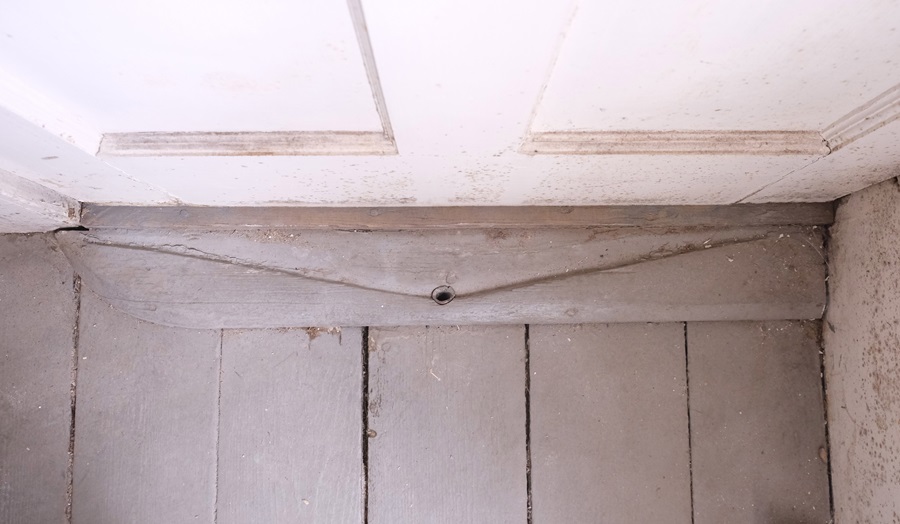Curious objects that tell stories of the past fill the displays at the Wellfleet Historical Society and Museum. More are stacked in boxes in the basement awaiting the completion of the building’s renovation. And as the building undergoes its transformation, curious details of the structure itself are emerging with stories of their own.
A bean cellar, recently cleared out, will be viewable through a window in the floor, and during renovations on the second floor, a smoker was found in a wall abutting a chimney. But at the moment, David Wright, the museum’s curator, is intrigued by something most visitors would overlook — and walk right over.

“I think of this every time I get frustrated with a piece of technology,” says Wright, looking down at the interior threshold of the building’s back door. Right below the door sits a rectangular piece of wood. Its length is the same as the door’s width, but it’s not merely the sill. Instead, it extends about eight inches into the room. A long triangular shape directed toward a small hole in the floor is carved into the appendage.
“It’s a marvel of Yankee ingenuity in contrast to our computers that break down every 10 minutes,” says Wright. This architectural detail worked to direct rainwater blown under the door into a bucket positioned beneath the floor in the building’s basement.
“People ask me what it’s like here in the winter,” says Wright. “It’s the wind that’s the big factor.” This solution for rain and wind reduced the need for entrance mats or towels, which would have been difficult to dry in damp New England winters in 1850, when this house was built.

The raincatcher was likely a safety feature as well. The door leads into a room that has been historically preserved, with long floorboards painted in a glossy gray finish. When wet, a surface like this would be as slippery as a skating rink.
The end of the rain catcher that abuts the wall is cut at a 90-degree angle, but the end positioned into the open floor space is cut in a graceful curve. This feature, along with a rounded edge along the whole length of the raincatcher, prevents tripping. “I marvel at the simplicity and elegance of it,” says Wright.
The form of the elongated triangle, a wide chevron, is a particularly elegant shape. The Yankees who built this raincatcher likely weren’t primarily concerned with decoration, but this object neatly merges their utilitarian concerns with aesthetics.
Many feet have walked over this raincatcher: shoppers came through the threshold to buy dry goods when the place functioned as the Payne-Higgins store, and patrons stepped out of the wind and rain to borrow books here when the building housed the Wellfleet Public Library.

The historical society purchased the building in 1951 and has occupied it since. The society also purchased two abutting properties: one in 2007 that had been used as a residence, stagecoach shop, and rooming house and another in 2015 that had been the studio of the late artist John Mulcahy.
The original building has not been accessible to the public for the last few years because of the renovations. But this summer it will reopen. Wright will have an office upstairs where there will be a resource room and study for researchers. In the main space, there’s new lighting and heat for the first time, but “it still has the feel of the old museum,” says Wright. The midsection of the museum will still be under construction, though, eventually connecting all parts of the building and offering more exhibition space and accessibility.
Underneath the door of what is now the main entrance of the museum was once another raincatcher. All that’s left now is a section of discolored floorboards in a chevron shape. So, if you’re visiting on a windy and wet spring day and step into a puddle upon opening the door, remember that people who came before us had a solution to that problem.



